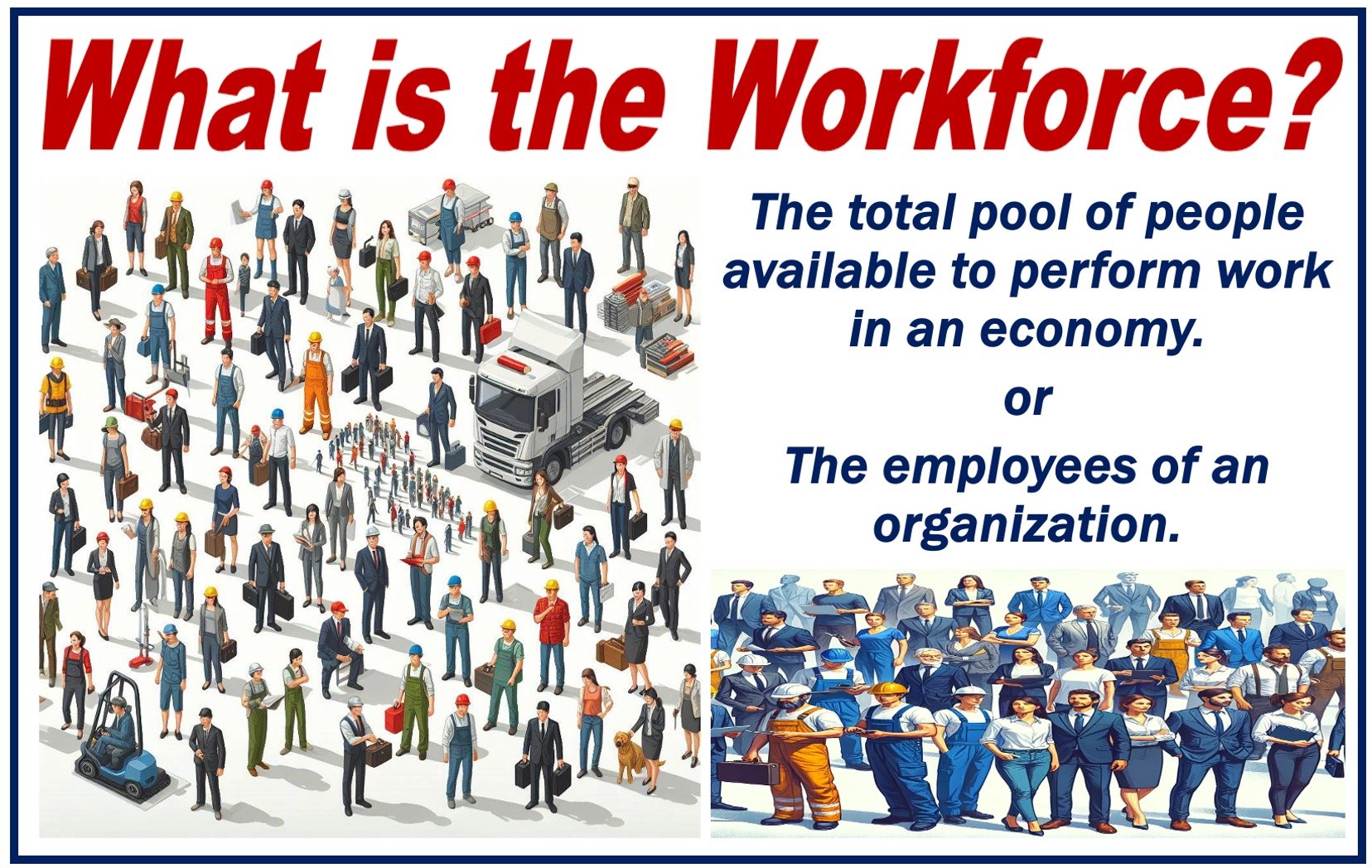What is a Workforce?
The word “Workforce” refers to either the employees of a company or organization, or people who are available to work. All the people in an economy who contribute their skills and labor are its workforce.
The term may refer to the workforce of a single company, a particular industry, a city, or even an entire country.
According to etymonline.com, the term first entered the English language in 1947.
The Cambridge Dictionary has two definitions of “workforce” and example sentences of the term in a sentence with each meaning:
“1. The group of people who work in a company, industry, country, etc. Example Sentence: ‘The majority of factories in the region have a workforce of 50 to 100 (people).'”
“2. The people who are available for work in a particular area, country, or industry. Example Sentence: ‘Schools are working increasingly with businesses to fill gaps in the workforce.'”
Who Makes Up a Workforce?
A workforce includes a diverse range of individuals. Let’s take a look at some of them:
-
Employees
People who work for a company, a national/local government department, or any entity in exchange for wages or a salary.
-
Self-employed people
Those who run their own businesses, such as freelancers, consultants, and independent contractors.
-
Unemployed individuals
Individuals who are actively seeking work but are currently without a job.

Who are excluded?
People not regarded as able or available for work are excluded from the workforce. This includes, for example, full-time homemakers or those unable to work due to disabilities.
A “homemaker” is somebody who manages household chores and caregiving duties, such as a housewife or househusband. The term “housewife” is becoming less common due to evolving social norms that embrace gender neutrality and recognize diverse family structures and roles.
Understanding a Workforce
When we analyze the structure of a workforce, we look at the following aspect:
-
Size
How big the workforce is – how many people are in it – tells us about the potential labor supply.
-
Demographics
The age, gender, educational levels, and skillsets of the workforce help us understand its strengths and weaknesses.
-
Participation Rate
This tells us what percentage of the working-age population is actively employed or looking for work. A high participation rate indicates a healthy economy. Participation rates in the advanced economies today are higher than they were one hundred years ago.
-
Unemployment Rate
This tells us what percentage of the workforce does not have a job but is actively seeking work.
The Importance of a Strong Workforce
Governments and leaders aim for a strong and skilled workforce for several key reasons:
-
Economic Growth
It drives businesses, creates goods and services, and fuels a country’s overall economic well-being.
-
Innovation
A skilled and diverse workforce is crucial for fostering creativity and innovative problem-solving.
-
Standard of Living
A high standard of living for a country’s citizens is attainable only with a robust and skilled workforce.
Final Thoughts
To conclude, the workforce is key to any economy, including both working people and those seeking jobs. It supports business growth, new ideas, and better living conditions. Recognizing its value is crucial for planning a successful future for all.

